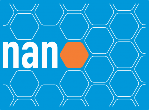Banca de DEFESA: GUILHERME RIBEIRO PORTUGAL
Uma banca de DEFESA de MESTRADO foi cadastrada pelo programa.DISCENTE : GUILHERME RIBEIRO PORTUGAL
DATA : 16/12/2020
HORA: 14:00
LOCAL: virtual
TÍTULO:
NaTaO3 perovskite structural and electronic properties: a theoretical approach from infinite surfaces to nanostructures
PÁGINAS: 131
RESUMO:
Sodium tantalate (NaTaO3) structures have been considered one of the most promising materials to conduct water-splitting photocatalytic reactions. Understanding the structural and electronic behavior of atomically distinct surfaces is of fundamental importance to elucidate the relationship between reactivity and different terminations. A first broader systematic investigation of infinite slabs points to the orthorhombic NaTaO-terminated surface as the best candidate to perform photocatalytic reactions. The cleavage-induced TaO4 arrangements, although more energetically expensive, allow structural reconstruction to take place. Well-localized Ta energy states are introduced inside the bandgap, and happen to be coherently aligned with the water oxidation potential. In nanostructures, a similar behavior is observed for cubic [110]-oriented (Na,K)TaO3 ultrathin films. Surface Ta shallow states emerge into the bandgap since the (110) cleavage breaks the octahedral symmetry to create TaO4 units. We physically explain the associated orbital stabilization, which is maximized when biaxial tensile increases the TaO4 planarity and moves surface states into the bandgap. Compressive biaxial strain induces the opposite behavior. Such strain-driven modulation is desired in different applications. Yet, NaO-TaO2 polar slabs indicate the presence of surface 2D carries carrier gases in NaTaO3 ultrathin films. Furthermore, we elucidate their formation mechanism, thickness dependence, and tuning through biaxial in-plane strain, which concerns specially nanoelectronics. Regarding nanowires, chemically different facets affected structural and electronic properties even more prominently. Interestingly, besides the half-metal character of NaO-terminated wires, NaTaO-terminated nanowires also have surface TaO4 units that become more planar upon structural reconstruction and introduce occupied Ta 5d states below their conduction band. Finally, the initial study of the H2O-surface interactions in nanowires reveals their hydrophilic character and shows the particularities of adsorption in different sites of NaO, TaO and NaTaO facets. The aforementioned common characteristics that have been observed from infinite slabs to nanowires have led to a better understanding of possible reasons why NaTaO3 stands out intrinsically in photocatalytic terms, and can therefore guide experimental studies and future investigations on the subject.
MEMBROS DA BANCA:
Membro Titular - Examinador(a) Interno ao Programa - 1671688 - ANDRE SARTO POLO
Membro Titular - Examinador(a) Externo ao Programa - 1282172 - ROBERTO GOMES DE AGUIAR VEIGA
Presidente - Externo ao Programa - 1760410 - JEVERSON TEODORO ARANTES JUNIOR
Membro Suplente - Examinador(a) Interno ao Programa - 2218228 - LUANA SUCUPIRA PEDROZA
Membro Suplente - Examinador(a) Externo ao Programa - 1765425 - MARCIO GUSTAVO DI VERNIERI CUPPARI




